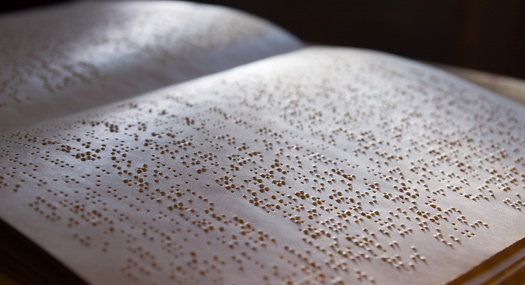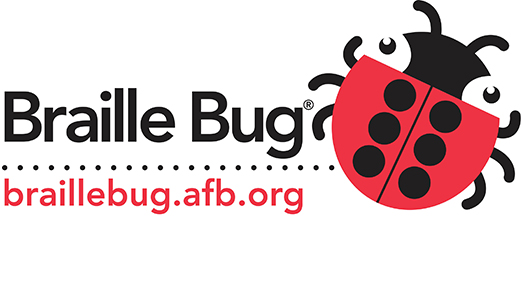"Braille is knowledge, and knowledge is power."
- Louis Braille
Louis Braille, the inventor of braille, was born two hundred and seven years ago on January 4, 1809. In his honor, we've gathered 16 braille resources in celebration of World Braille Day 2016!
What is braille, anyway? It’s not a language, but a system of raised dots that can be read with the fingers by people who are blind or who have low vision. Braille is a code by which many languages—such as English, Spanish, Arabic, Chinese, and dozens of others—may be written and read. Learn more about braille basics.
Today is a very special World Braille Day, since January 2016 marks the launch of Unified English Braille (UEB) in the United States. The U.S. members of the Braille Authority of North America (BANA) voted to adopt Unified English Braille (UEB) to replace English Braille American Edition in the U.S., which means that all new transcriptions will be produced in UEB and educators will teach the code.
 3. Make a smooth transition to teaching UEB by purchasing Beginning with Braille, which has been the go-to resource for educators teaching early braille literacy to students in the United States and abroad for more than 15 years. This highly anticipated second edition has been updated using Unified English Braille (UEB) and includes new teaching materials, record forms, and braille activities.
3. Make a smooth transition to teaching UEB by purchasing Beginning with Braille, which has been the go-to resource for educators teaching early braille literacy to students in the United States and abroad for more than 15 years. This highly anticipated second edition has been updated using Unified English Braille (UEB) and includes new teaching materials, record forms, and braille activities.
- The Burns Braille Guide: A Quick Reference to Unified English Braille, Second Edition, is a perfect resource to keep in your classroom or in your pocket. It has been revised and updated to reflect the changes introduced in the transition from English Braille American Edition (EBAE) to UEB. This easy-to-use reference guide includes common braille-to-print and print-to-braille conversions, as well as punctuation, new UEB contractions, and general rules and new terminology.
2015 was a busy year for AFB Press: we also published Reading Connections: Strategies for Teaching Students with Visual Impairments, a hands-on guide for teachers and professionals working to improve the reading skills of their students. Reading Connections addresses the needs of students who read print, braille, or both who have reading disabilities.
If you are the parent of a child who is blind or visually impaired, check out FamilyConnect’s introduction to braille, and other Literacy Resources for Parents of Children Who Are Blind or Visually Impaired.
A Seattle father wrote about what braille has meant to his son, who was born blind, in the blog post Touching Letters...Touching Lives.
Teachers and parents alike will enjoy these Tips for Promoting Braille in the Classroom, and Sources of Braille Children's Books and Magazines.
AFB's online museum celebrating "200 Years: The Life and Legacy of Louis Braille" honored the Louis Braille Bicentennial by tracing his life using photographs, engravings, and illustrations from books preserved in the American Foundation for the Blind's Archives and Rare Book Collection.
In 1952, one hundred years after his death, Louis Braille's body — with the exception of his hands — was moved from his home town to the Pantheon in Paris. Helen Keller was asked to give the speech on that occasion, and AFB is thrilled to bring you this marvelous movie clip of Helen Keller's speech honoring Louis Braille, and accepting the French Legion of Honor for her work on behalf of those with vision loss worldwide.
From the VisionAware blog, All About Braille: Six Dots, Four Perspectives illustrates the importance as well as staying power of the braille code. Learn more about whether braille might be the right reading method for you on VisionAware, and find out about the Unified English Braille code launching January 4.
- AFB's Braille Bug® site was created to help sighted children learn about braille through accessible games, riddles, and "secret messages," as well as a kid-friendly biography of Louis Braille.
Once you've gotten excited about braille, move onto the real thing with the Braille Trail® Activity Kit with Slate and Stylus. You can write your own braille messages! The kit includes The Braille Trail® Activity Book, a Janus slate and stylus, two braille sheets with secret messages, a Braille Bug® Alphabet card, and a Braille Bug® Alphabet Poster. You can even buy a Braille Bug mug with real braille on it!
AFB's Directory of Services is the place to go to find up-to-date listings of sources of audio, braille, or large print books, braille transcribers, or training in braille and reading instruction.
Explore AFB's Product Database to find refreshable braille displays, braille printers, braille translators, and other braille devices. For example, the 6dot™ Braille Label Maker, which is designed to be used by people who read and write braille, as well as those who support them. National Independent Living Associate Neva Fairchild notes, "It produces some of the best braille I have ever felt." And, because you can connect a USB keyboard, a parent or a teacher can make uncontracted labels while a braille reader can make contracted labels with the onboard braille keyboard.
Stay tuned for the January issue of AccessWorld, which will feature a roundup of braille technology articles, as well as an article about UEB by Jamie Pauls.
How are you celebrating World Braille Day? We'd love to hear your ideas in the comments.




